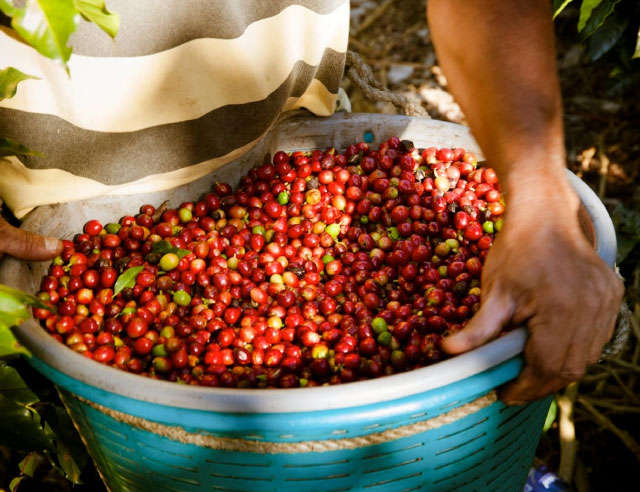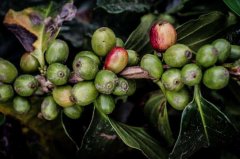Processing method of coffee beans in Rwanda Coffee washing station hand-classified coffee cherry processing steps
Throughout Rwanda, coffee beans are usually processed by wet processing. This is largely due to the efforts of modern people to invest time, energy and resources to develop public cleaning stations for the countless traces of coffee and cherries that need to be processed each year. Many of the small farms involved in the business are unable to create large independent washing stations like large coffee farms around the world. This is because most farmers grow coffee only part-time, usually using the rest of their farms to grow food. This practice is similar to that of Kenyan coffee.
As a result, the investment in these washing stations paid off, as the use of decent washing facilities helped to raise the quantity and quality of Rwandan coffee to a whole new level. Completely washed and natural, dry in the shade or in direct sunlight on an African bed
The production season in Rwanda lasts from March to August, but we usually pick from May to July. This always changes according to the area, the weather and the altitude of the farm. The farm is usually run by a very small family, which takes care of the plants and picks the cherries themselves. Usually they also grow crops for their own consumption, and some farmers own more land. Hundreds of small farmers in the local community usually transport their cherries to coffee washing stations for processing. These washing stations have strict requirements on the quality of cherries provided by farmers. If the selection is not good, they must manually select the lower quality cherries before accepting delivery at the cleaning station. The competition for cherries can be so fierce that farmers can transport them to any cleaning station they want, so it is important for cleaning stations to maintain a good relationship with farmers and provide competitive prices for higher quality. Manufacturers and their washing station managers often have a history and history with the local community, which helps to strengthen these relationships.

And has received training in managing the transportation of cherries from farmers. They have very strict procedures for receiving and sorting cherries. Cherries sent by farmers must be sorted by the farmers themselves. If not, the staff will do further sorting. Cherries are placed in a jar before pulping, where floats are removed and processed separately as low-grade coffee. Washed from Gitesi, it has a lot of complexity, layers of fragrant flowers, transparent and bright. Retain the flavor characteristics of boutique coffee "very sweet and syrup, with ripe red fruit, citrus, floral aromas and excellent brightness".
The climate in Rwanda is relatively cool for most seasons, which helps to control the fermentation process. For washed batches, Penagos 800Eco Pulper removes skin and 70% mucus. Then dry coffee is fermented for 10-12 hours. The parchment is then graded and washed in the channel, then divided into two grades according to its density, and then soaked in water in a water tank for 16 hours. The parchment is initially taken to the pre-drying table in the shade, and a large number of manual sorting is carried out when the parchment is still wet, because it is easier to see the defects. Parchment is dried on African drying beds for up to 15 days, during which time the parchment is covered with sunshades during the hottest days, at night and at any time of rain.
It is very important for a natural person to choose only the ripe cherries picked that day. For this reason, farmers traverse their trees many times, picking only ripe cherries and delivering a small amount every day. This is a way to earn the highest price, rather than having to sell immature cherries at a lower price.

Once delivered, the cherries are immediately sorted and floated, and then a single layer is placed on the drying table with no cherry overlap to ensure uniform air circulation.
During the dry period, when the sun is too strong, the team covers the bed with a sunshade net. In addition, when the coffee is on the drying bed, the team will sort it by hand every day to remove any defective cherries.
Important Notice :
前街咖啡 FrontStreet Coffee has moved to new addredd:
FrontStreet Coffee Address: 315,Donghua East Road,GuangZhou
Tel:020 38364473
- Prev

Rwanda coffee beans introduction bourbon gene mutation coffee beans history story flavor taste characteristics description
Rwandan coffee plays an important role in the country's economy, contributing significantly to foreign exchange earnings and monetization of the rural economy. About 95% of Rwanda's coffee plants are high-quality Arabica varieties of bourbon coffee. Relatively small numbers of Catuai and Caturra varieties are also planted. The types of coffee beans grown in Rwanda include Caturra, Catuai, Bourbon (Arab
- Next

History of coffee in Rwanda, one of the largest coffee growers in the world. Introduction to small coffee farms.
Rwandan coffee has both a colorful history and an exciting taste. It is a rare and excellent coffee producing area. But it is true that the history of coffee in Rwanda is not as long as we think, and the historical development of coffee in Rwanda can even be described as twists and turns. The first coffee plants arrived in Rwanda as late as the early 20th century, but 30 years later, Rwandan coffee
Related
- Detailed explanation of Jadeite planting Land in Panamanian Jadeite Manor introduction to the grading system of Jadeite competitive bidding, Red bid, Green bid and Rose Summer
- Story of Coffee planting in Brenka region of Costa Rica Stonehenge Manor anaerobic heavy honey treatment of flavor mouth
- What's on the barrel of Blue Mountain Coffee beans?
- Can American coffee also pull flowers? How to use hot American style to pull out a good-looking pattern?
- Can you make a cold extract with coffee beans? What is the right proportion for cold-extracted coffee formula?
- Indonesian PWN Gold Mandrine Coffee Origin Features Flavor How to Chong? Mandolin coffee is American.
- A brief introduction to the flavor characteristics of Brazilian yellow bourbon coffee beans
- What is the effect of different water quality on the flavor of cold-extracted coffee? What kind of water is best for brewing coffee?
- Why do you think of Rose Summer whenever you mention Panamanian coffee?
- Introduction to the characteristics of authentic blue mountain coffee bean producing areas? What is the CIB Coffee Authority in Jamaica?

